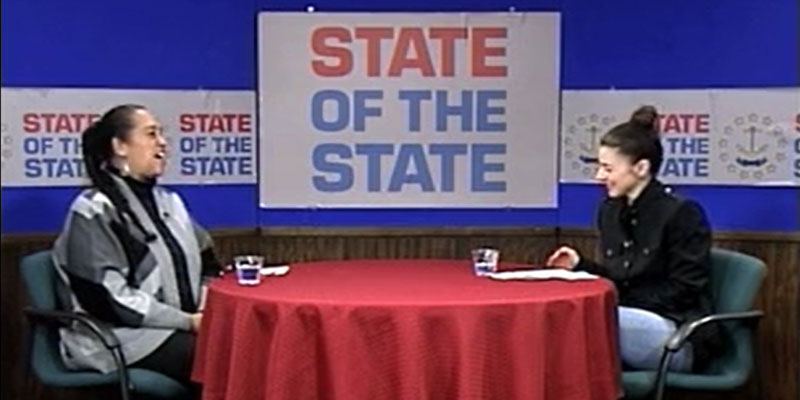Anchor Rising doesn’t often dabble in occult topics, but Max Borders brought the concept of Egregores to my attention, and it’s one of those ideas that is practical whether taken as a merely mythic representation or a factual supernatural force.
Let’s note, first, that Borders’s essay is timely and worth reading for a variety of other reasons. At this time of continuing irrational COVID restrictions, his reminder about the meaning of Irish Democracy is worth taking, and the related concept of conducting an “underthrow” is a helpful coinage.
The following, however, is where the ideas tap into deeper currents. Borders begins with the concept that Dr. Robert Malone introduced in a now-controversial interview on the Joe Rogan Experience of “mass formation psychosis” (MFP):
MFP under our construal is like an Egregore, an occult concept representing a non-physical entity that emerges from a collective. Such an entity exists because enough people believe something, creating mass psychology that seems to take on a life of its own. In this case, the Egregore forms because too many people now have a strange idea of science.
So, to draw the occult picture a little more explicitly, when a group of people believe something deeply, it summons or brings into being a demon force who then directs those people according to its will, as distinct from (and often at odds with) the original desires of the believers. Here’s where the mythic-factual line emerges.
As a practical matter, the metaphor is a useful way to warn against personifying a concept, as in “believe the Science.” Do that, and people will emerge claiming to speak for “the Science” and wielding whatever power the institution has aggregated unto itself. So, when Fauci equates himself with the embodiment of Science, we see the risk of handing over our own reverence for scientific practice to a particular person with his own motives and biases.
We should think a layer more deeply, though. In the video to which Borders links to provide an explanation of the term, “Egregore,” the interviewer asks his guest how one might test for the existence of such an entity. The guest (unpersuasively, to my mind) suggests that one can make a prediction based on the thesis as a means of proving its validity. I’d propose two more-immediate proofs from logic.
The first is that the Egregore, being an independent will, directs the movement toward beliefs that are logically at odds with the premises of the belief that brought it into being in the first place. This has clearly happened already. The process of science is founded on a notion of continual challenge of orthodoxies and the principle of changing one’s mind based on evidence. As Borders emphasizes, once we start talking about what “the settled Science” says, we’ve left this principle behind.
He only incidentally implies the second test, however, when he quotes from an essay by Matthew Crawford titled, “How science has been corrupted“:
Increasingly, science is pressed into duty as authority. It is invoked to legitimise the transfer of sovereignty from democratic to technocratic bodies, and as a device for insulating such moves from the realm of political contest.
This test brings us into the demonic. The first test suggests a mere phenomenon happening in the minds of believers, but the second test is suggestive of an entity striving to become embodied. Having captured a fictional shell imbued with human belief, the Egregore seeks to make itself into an independent thing with its own power distinct from the continued adherence of believers and insulated from human methods of reclaiming power ceded to a monster.
Whether that’s real or still just a personification for describing group psychology, it’s a scary development.
Featured image by Arno Senoner on Unsplash.
[Open full post]Johns Hopkins is an early example:
A new working paper from Johns Hopkins University’s “Studies in Applied Economics” institute claims that COVID-19 lockdowns imposed by a variety of governments worldwide had “little to no effect” on COVID-19 mortality. The study, conducted by three professors from around the world, also found that lockdowns “imposed enormous economic and social costs” and are “ill-founded and should be rejected as a pandemic policy instrument.”
Interestingly, by the study’s definition — “the imposition of at least one compulsory, non-pharmaceutical intervention” — Rhode Island is still be considered in lockdown, because the definition includes mandatory polices such as face masks. That’s just crazy.
Another point worth emphasizing is the dividing line between the “experts” and what many of us have been suggesting all along. The study notes that the infamous Imperial College London models that kicked off the global panic “predicted that a suppression strategy based on a lockdown would reduce COVID-19 mortality by up to 98%.” What a joke. Yet, people still listen to Imperial College and, inexplicably, still have faith in expert predictions. They’re like primitive people still clinging to some talisman that has proven not to work, but which is the only comfort they have.
Here’s an important caveat: the definition of “lockdowns” does not include recommendations or guidance. That is the role that government should take, as well as provisions to make good decisions easier to make.
So, we return to the prescription that some of us made way back in early days. What we should have done — and what we can still do — is take measures to protect especially vulnerable populations, keep people well informed about the latest findings in a trustworthy, credible way so they can make good decisions, help to fill in resources gaps so people can make their good decisions free from practical fears, and then get back to normal life.
Will the virus still do harm? Yes. Will variants arise and change calculations? Probably. But the alternative is pretending to do something more effective while doing incredible economic harm to the global economy, ecological harm to the planet, psychological harm to people around the planet, and developmental harm to younger generations.
Featured image by Sebastiaan Stam on Unsplash.
[Open full post]Don’t miss the fact that this was published in The Atlantic by a senior fellow at the progressive Brookings Institution, Shadi Hamid:
The racial disparities in COVID outcomes are a matter of record, but to suggest that race causes these negative outcomes is a classic case of mistaking correlation for causation. This is how facts, despite being true, are misused and weaponized. Rather than race itself, variables that are correlated with race—such as socioeconomic status, health-care access, geography, and higher rates of obesity or diabetes—are what affect a patient’s health. Those who presumably know better, such as the Food and Drug Administration, have contributed to the confusion by highlighting that race—on its own—may place individuals at greater COVID-related risk. …
The rationing rules in New York and elsewhere are not the product of anything resembling conventional political persuasion. No party would support—certainly not openly—the essentialization and instrumentalization of race in medicine. Few are willing to defend policies such as these on the merits, because what exactly would they say? Tellingly, these controversies have received limited coverage from mainstream outlets. Recently, the Associated Press published an article portraying claims of race triage as right-wing propaganda. “Medical experts say the opposition is misleading,” the story declared.
That statement in the AP is a lie, and we all know it’s a lie. It’s another lie the government-and-information elite will tell us until they think they have the power to be honest and argue that white people should die to make up for the disadvantages that the currents of history have placed disproportionately among minorities. You can practically hear their inner dialogue: If white people, with all their advantages, continue to be at high risk, that must be their fault, anyway.
Healthcare is not the first area of public concern in which this mental illness among Western progressives is having real consequences, but it’s a very stark and unambiguous one. While the tendency of humanity to both surprise and disappoint dissuades me from the making of predictions, I think racist distribution of medical care will be the end of the line. The anger of those who think mask and vaccine mandates are impositions on their rights is nothing compared with the rage that will swell when it becomes clear that medical treatment is being systematically provided or withheld for racist reasons — in a systemic racism that is codified and clear rather than ephemeral and inferred.
Featured image by Brett Jordan on Unsplash.
[Open full post]On WNRI 1380 AM/95.1 FM, John DePetro and Justin Katz discuss:
- An RI newcomer at the top of the GOP ticket?
- Which fact doesn’t fit in the McKee-Scott conflict?
- What district is Seth in, anyway?
- How’s it looking in the Congressional race?
Featured image by Chanhee Lee on Unsplash.
[Open full post]Granted, I’ve been falling behind lately, but it still surprised me when some of the other participants in a class I attended last week brought up the compounding effects of the massive trucker convoy taking place over weeks in Canada to protest vaccine mandates. As Russell Brand notes in the video below, following the news media wouldn’t lead one to understand just how big a deal it is, if they even know about it at all:
As this disconnect between what’s going on in the world and what’s reported about what’s going on in the world increases, we may truly see the next tectonic shift in how people get their information… and how people make a living providing information.
[Open full post]Writing for J&S Transportation, Travis Van Slooten tries to understand why Americans have moved during the pandemic. To start with, though, we should probably think about why they have not:
A lot of attention has been focused on how the COVID-19 pandemic affected moving trends in the U.S. While some use terms like exodus when reporting about Americans who left the cities for the suburbs and smaller towns, others say these reports are an exaggeration.
For instance, William Frey of the nonprofit public policy organization Brookings Institution reports that “New Census Bureau data released this month [November 2021] shows that despite the attention given to COVID-related migration out of cities, college towns, and other pandemic-impacted areas, overall permanent migration levels in the U.S. plummeted to a historically low level during the first year of the pandemic.”
Upending your life is a stressful, risky thing during the best of times. Who wants to be learning a new area (Where’s the pharmacy? Where’s the hospital?) during a pandemic?
The included map, however, shows that, as usual, Rhode Island was not a destination state. J&S apparently ships people’s vehicles for them, and the only states in our entire region that saw an increase were New Hampshire and Maine. To be sure, that particular measure might throw some confounding variables into the mix. For example, people moving to a major city like New York may not have or not bring vehicles with them.
That said, the measure, here, is change from previous trends, and the story is familiar. As people can live farther from work, they tend to head where Big Government can’t tell them what to do, and the pandemic has certainly added fuel to that fire: Northeastern New England, Florida, South Carolina, Texas, and so on.
The really interesting question is what happens next. If I had to bet, I’d predict that, when people stop having the fear of illness-driven lockdowns as they’re trying to establish themselves in new areas, they’ll take the opportunity to move away from Big Government states at an even greater pace. On the other hand, those heavy-lockdown areas have been suppressing their economies, so they may experience a larger-than-average rebound… unless they’ve done permanent damage to themselves, of course.
Featured image by Markus Spiskey on Unsplash.
[Open full post]Jon Miltimore explains why Dolores Umbridge is the best character in the Harry Potter books (as distinct from his favorite character). She’s an archetype, and unfortunately, our society is becoming more archetypal, these days, so to speak:
[Open full post]Like Dolores Umbridge, Australian leaders (and Lemon) apparently see no problem in using force for the greater good, including using the military to enforce lockdowns and prohibit free assembly. They are a chilling reminder of what the Christian author CS Lewis once described as perhaps the most dangerous kind of oppression.
“Of all tyrannies, a tyranny sincerely exercised for the good of its victims may be the most oppressive,” the Christian author once observed. “It would be better to live under robber barons than under omnipotent moral busybodies. The robber baron’s cruelty may sometimes sleep, his cupidity may at some point be satiated; but those who torment us for our own good will torment us without end for they do so with the approval of their own conscience.”
I notice, here and there around social media, that the Trump derangement inexplicably continues. He truly is the face on the screen for a daily two-minute hate. One wonders about the degree to which it’s a deliberate decoy from news like this:
A new court filing by special counsel John Durham reveals that Department of Justice (DOJ) Inspector General Michael Horowitz concealed crucial information from Durham in connection with the ongoing prosecution of Michael Sussmann, a former attorney to Hillary Clinton’s 2016 presidential campaign.
The filing also reveals that Horowitz failed to disclose that his office is in possession of two cellphones used by former FBI general counsel James Baker. The phones may contain information that’s important to the Sussmann case, as well as to a separate criminal leak investigation of Baker that Durham personally conducted between 2017 and 2019.
Oh, but President Trump gave a speech and used language!
Once again, the concerns one hears in the mainstream are not really about what people are doing, but about what side they’re doing it in service of.
[Open full post]Brown sociology professor Hilary LevyFriedman presents us with an interesting philosophical and sociological question:
Like, seriously: “Not a single kid has died in a mass reading, yet they’re banning books instead of guns.”
As far as I can tell, the quoted text is an uncited retweet of BlackKnight10k, whose deep insight has had a healthy run around Twitter. Of course, the accuracy of that depth is subject to challenge. Guns are all but banned from schools, and one could argue that the removal of a particular book from a particular school is not quite “banning” so much as prudential judgment in some cases. (Note that neither LevyFriedman nor BlackKnight gives us any specifics to go by.)
However, taking the sentiment as intended would probably require translating it as something like, “Those other people for whom I have contempt are afraid of knowledge, while good people like me genuinely want to protect children, and those other people are clearly incapable and undeserving of an equal say in our governance.”
Asked to defend the fairness of my translation, I’d raise the probable overlap between people who agree with the “mass reading” quip and people who agree that Joe Rogan should be removed from Spotify. Observe that BlackKnight’s name on Twitter at the moment is “I Smoked $4B Worth Of Spotify Stock.” Ah, well of course that’s different. The “misinformation” one might hear on Joe Rogan really could result in death, while the books that the good people defend could not.
So, the “not a single kid” talk turns out to be a sort of hyperbole in service of the good people’s inherited moral superiority. They reserve the right to be contemptuous on the grounds of categorical principles like free speech and the sanctity of books while adhering to a more practical politics that makes banning books they dislike obvious, even obligatory. Doubting my fairness again? How many public schools do you think have copies of — much less prominently display — the highly successful Word on Fire study Bible?
Certainly, this is not a new debate, and plucking hypocrisy from the Twitterverse is cheap sport, but its casual promotion by an Ivy League sociology professor who is working on a law degree seems so obviously out of character for that role as to expose deep cultural problems that we’d best resolve soon.
Featured image by Luca Signorelli.
[Open full post]Tomaquag Museum Update (1/24/22) from John Carlevale on Vimeo.
Many exciting things have happened at the Tomaquag Museum since Loren Spears’ last appearance. She reacquaints us with the museum’s beginnings and updates with some of the most important program changes, partnerships developed, enhancements to historical collections, exhibits, classes in indigenous history, and much more. The most exciting of all is the expected groundbreaking and start of construction in the Fall of 2022 of the long-awaited, state-of-the-art, four-building campus of a new Tomaquag Museum.
[Open full post]







